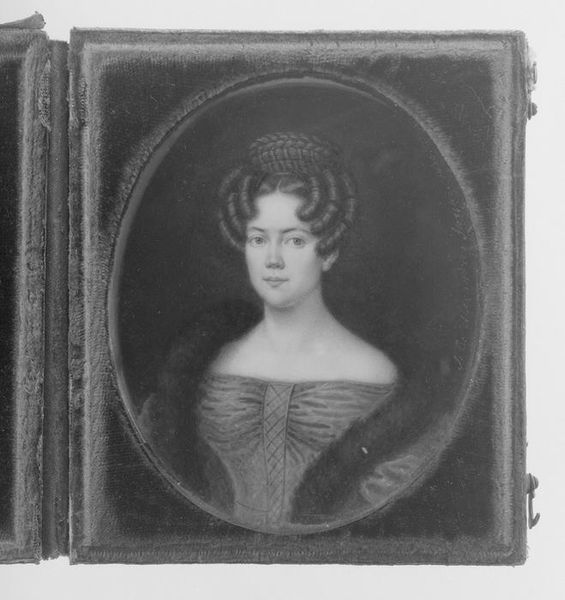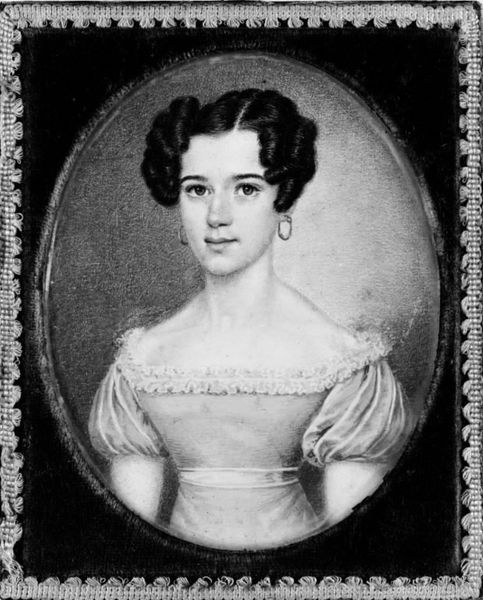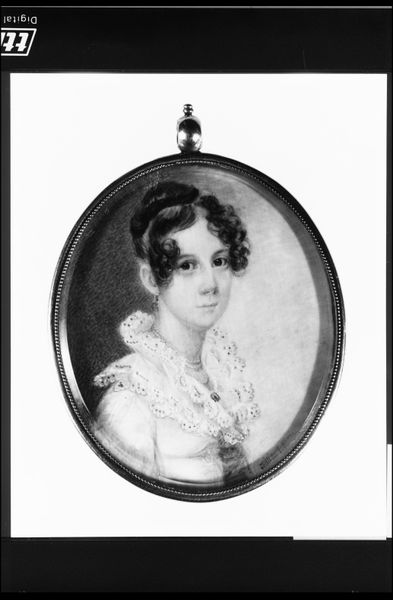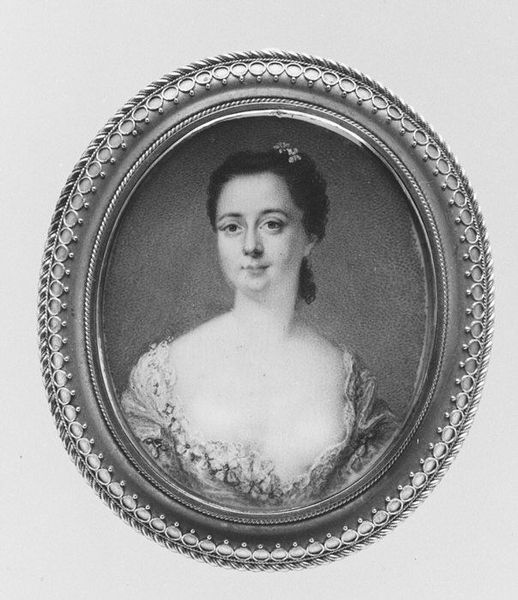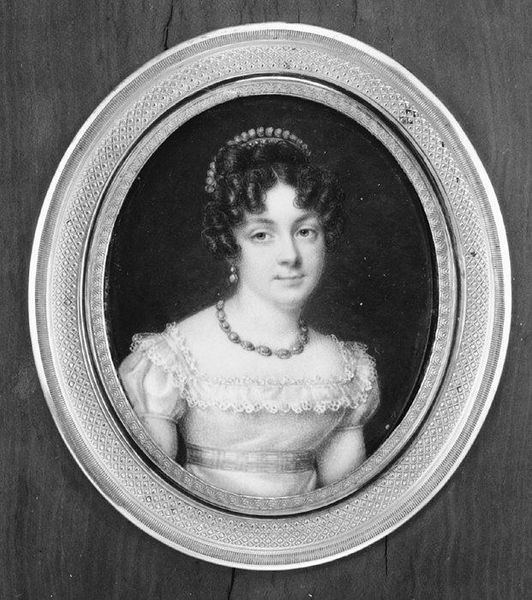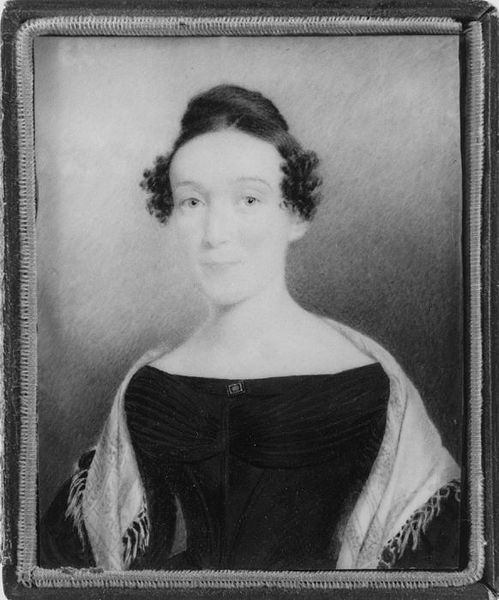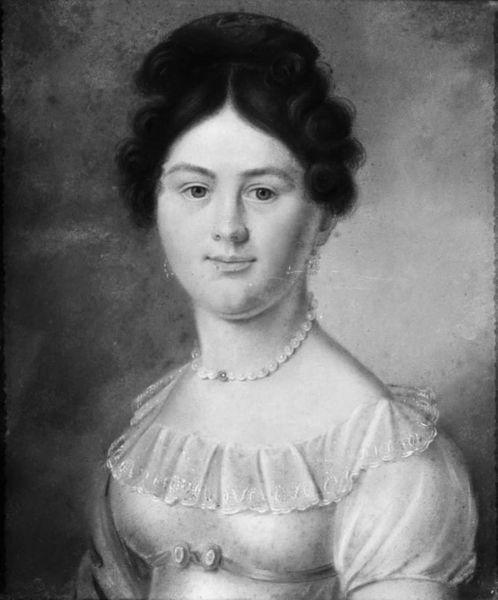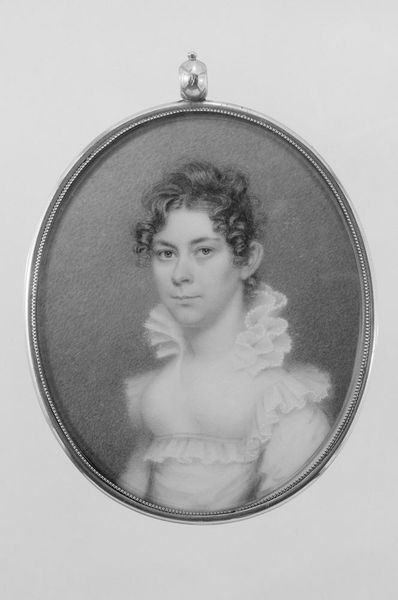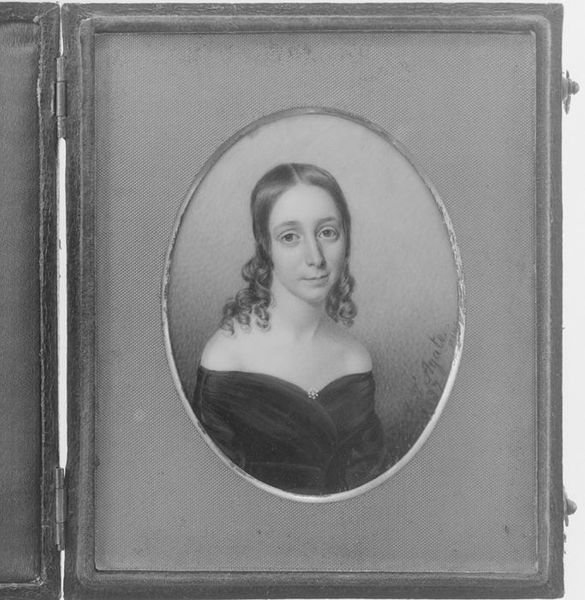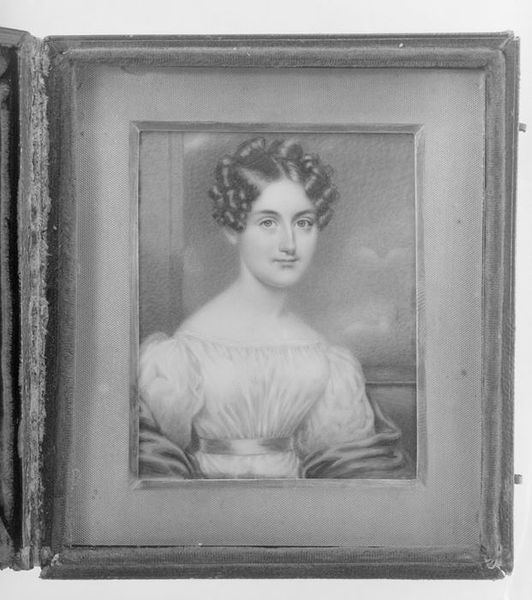
drawing, pencil
#
portrait
#
drawing
#
charcoal drawing
#
romanticism
#
pencil
#
portrait drawing
#
academic-art
Dimensions: 3 3/8 x 2 5/8 in. (8.5 x 6.8 cm)
Copyright: Public Domain
Curator: Immediately I am drawn to the delicacy of line and light—there’s such a fleeting, dreamlike quality to the rendering here. Editor: That’s precisely what I see in Henry Williams' "Portrait of a Lady" created in 1826. It’s rendered using pencil and charcoal, offering a fascinating glimpse into early 19th-century portraiture, especially as we see it residing now at the Metropolitan Museum of Art. Curator: It’s the gaze that holds me—it’s so direct, almost challenging, but framed by this very Romantic sweetness in the hair and dress. There’s an interesting tension. Editor: I think you're right. The era very much prized decorum in female portraiture but even in the softer strokes here, we get a strong sense of this young woman's individual spirit, an example perhaps of how art in the Romantic era subtly hinted at interiority. Portraits like these were important signifiers, weren't they, designed to be seen and read socially? Curator: Exactly. It feels as though she might lean out from the frame and whisper a secret or an intriguing observation. Editor: The pencil and charcoal medium really contributes to that immediacy. Oil paints in a portrait would imply wealth, authority, permanence. This drawing is more like a personal artifact, an intimate sketch shared between friends, allowing her humanity to seep through despite the conventions of the era. Curator: Almost like a secret passed down through generations. Editor: Precisely. It's wonderful how a seemingly conventional portrait manages to convey so much unspoken nuance. Curator: I see her looking directly at me, across a vast expanse of time, almost as if to say, "Yes, I existed. I felt. I mattered." Editor: Well, hopefully, with artwork like this preserved, that sentiment continues to carry weight today.
Comments
No comments
Be the first to comment and join the conversation on the ultimate creative platform.
